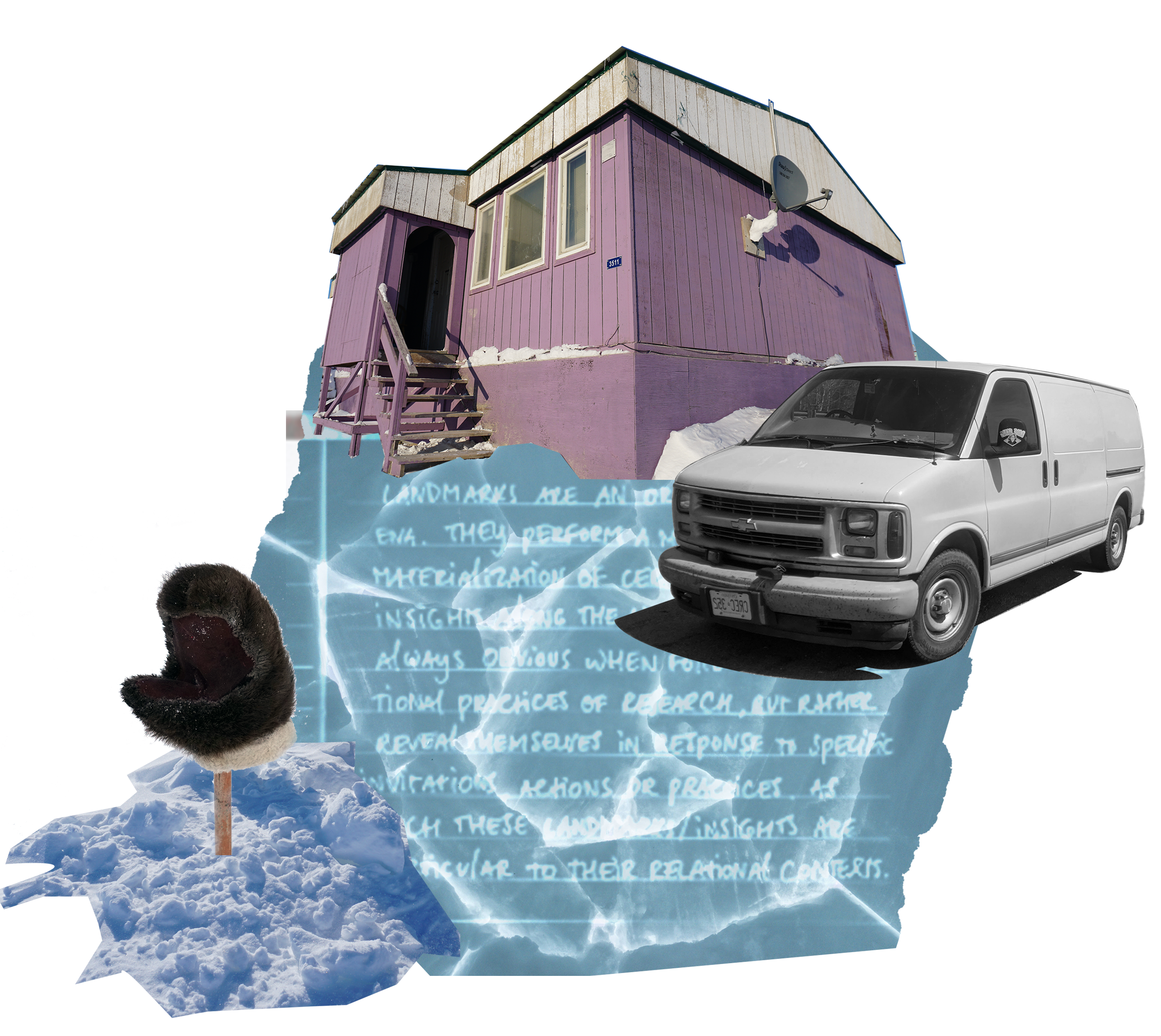Knowledge as Movement and Dwelling

Landmarks are defining features in the land that traditionally play an important role in Inuit topographical understandings of their land and its resources. They are important orienting features to keep one's bearing while travelling and to determine where one is located at any given moment (Aporta date). As a figure in this knowledge-land-scape they perform certain findings and insights that you can gather along the way. These insights are not always obvious when you follow only the three main cuts of the knowledge-land-scape. Like this one, they rather reveal themselves to you, as you respond to specific invitations, detours and ice pressure ridges. The insight that these landmarks have to offer are always particular to the paths and trails that lead towards them, and their meaning materializes in relation to where you come from, where are you going and what decisions you have made on the way.
Go outside, and touch some dirt.
Then return to Cut 1: Voices of Thunder, or Cut 3: Wayfaring the Bearwatch project
